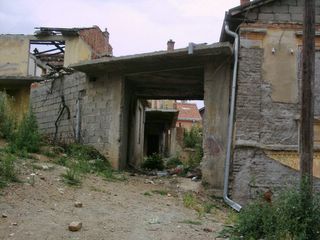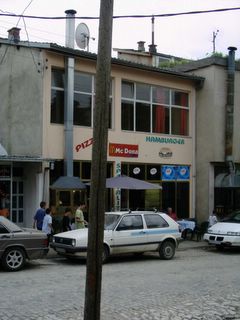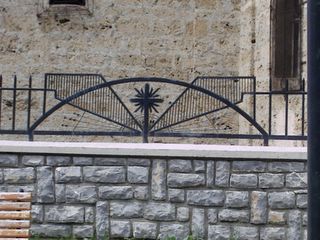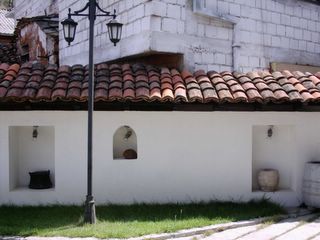
Albanian League of Prizren Museum 4: the artefacts set into these walls include:
- left, an iron cooking pot or cauldron;
- centre, a piece of unidentified ceramics; and
- right, a soapstone mortar.
archaeoblog on human rights archaeology - community cultural heritage in Prizren/Prizren
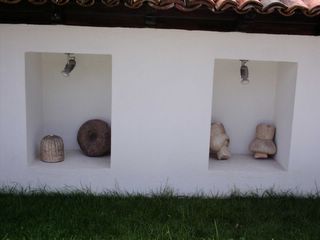
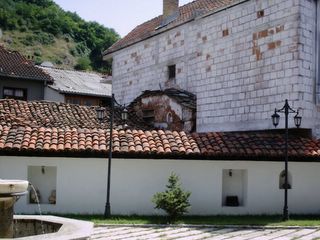
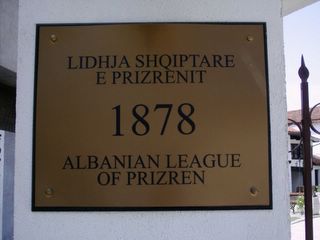
Albanian league is the first organisation in Kosovo and Metohia (because the Kosovo is only the small part of that Srbian province)that is formed for aim of construction of "Greater Albania" (ethnic clean land of Albanians).International comunniti was help to Albanians to build that "dream".In its piece on Prizren Municipality, Human Rights Watch included a footnote on the League of Prizren that may serve as a middle ground:
The League of Prizren was founded in 1878, bringing together representatives of all Albanian inhabited regions to demand autonomy from the Ottomans. The establishment of the League was a landmark in the movement for Albanian self-determination. The building that was destroyed-where the League was organized-archived historic documents relating to the League's creation and activities.

ketu pushon: Veli Shah Baba, nga Horosani i cili vdiq ne vitin 1570. Ndertuesi i xhamise: Katip Sinani ne vitin 1577. Vorrin e Veli Shah Babes (si halim i madhe). Katip Sinani morri nen strehun e xhamise, ne anen e majte te hyrjes dhe vuri kuburen. Duke bere meremetinin ne vitin 1996 hoqen kuburen, per zgjerimin e koridorit dhe mafiles me nderime te larta xhemati i mahalles vendosi kete pllake te perjeteshme. Prizren 1997.This translates as: "here rests Father Veli Shah, from Horosani, who was born in Vitin in 1570. A mosque, Katip Sinani, was built in Vitin in 1577..." I just found this unfinished and unpublished; I'm not going to risk making any more errors of translation and have published it as it is.



